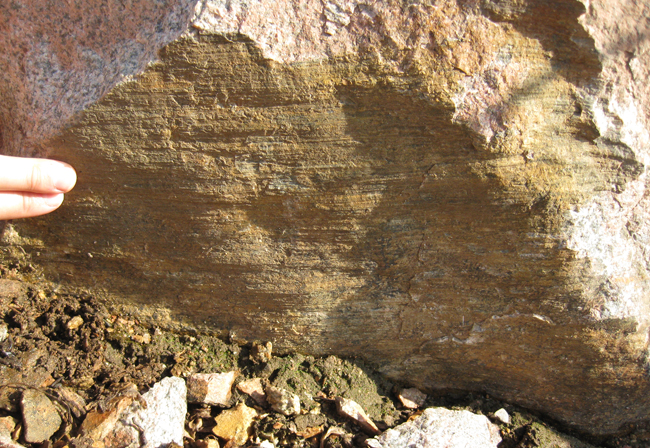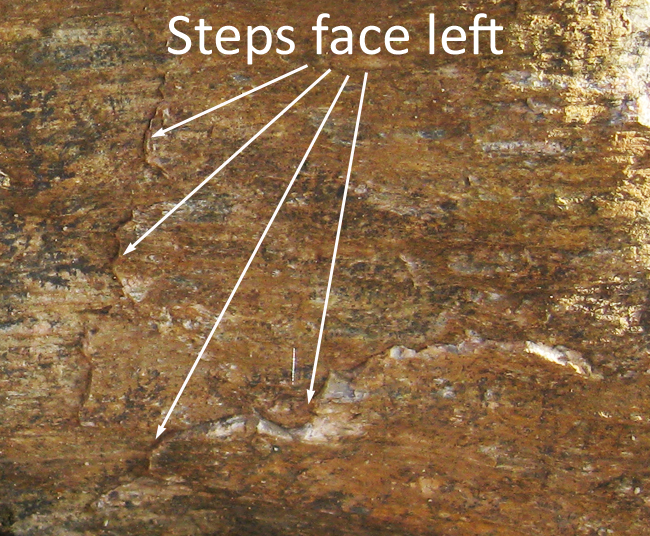
Another shot from my pre-GSA structural geology field trip to the Superior Craton last fall, up in southern Ontario, Canada. The image shows slickenlines coated with brownish fault gouge and oxide staining, cutting through a high-potassium granite (see fresh surface at upper left).
The slickenlines are little gouged grooves where asperities (bumps) on the block of rock opposite this one ground into this rock along the fault surface as the two moved relative to one another. So did our block of granite move to the left or the right relative to the missing block? Let’s zoom in to find out.

Little “steps” on the surface of the fault face to the left. If you were to run your finger over this outcrop from right to left, it would feel pretty smooth. On the other hand, running your finger over it from left to right, your fingertip would catch on those steps (and smaller, similarly-oriented steps), and the passage would feel rough and halting, if not downright painful.
The block of rock on the opposite side of the fault must have moved to the left, relative to this granite fault face we’re looking at.

So this would then be a right lateral fault movement right/correct?
“Right!”
it’s cool. in my country Indonesia, it’s hard to find, slickenside or slickenside. because erosion ..